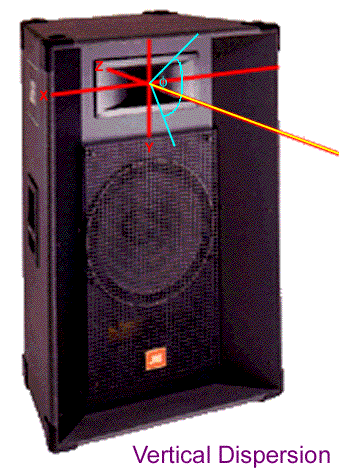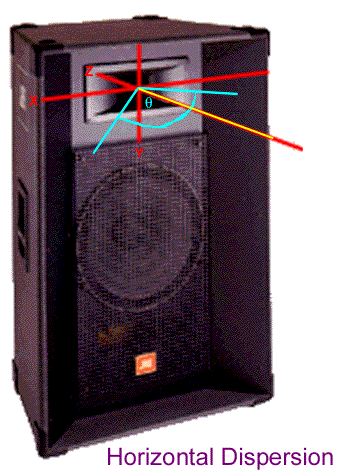The Flaming Weasels Web Project
|
Web Sites:
Amplifiers:
|
Speakers and
Monitors:
|
The Problem:
You are the rock band the
Flaming Weasels. Your last three sound engineers have quite on
you and you now have to design your own sound system. Your
microphones and other equipment are all OK, but your amplifiers,
speakers, and monitors have all been mysteriously destroyed.
Problem #1 -
Finding an Amplifier
DEFINITIONS:
- Front of
House Loudspeaker: The main speakers
used in a performance. They are at the front of
the stage and pointed at the audience.
- Amplifier
Power: The power produced by an
amplifier is measured in watts.
- Loudspeaker
Capacity: Speakers must be connected to
an amplifier that can deliver the right ammount
of power. If you connect an amplifier that is too
powerful, it may damage the loudspeakrs (and
cause them to "blow out"). Connecting
speakers to an amplifier that is too weak can
also damage the speakers. In general, it is a
good idea to match the loudspeaker capacity and
the amplifier power within 20%.
- Impedance:
Impedance is a measure of the electrical
resitance of the speaker and is measured in ohms..
An amplifier connected to a speaker with a lower
impedance will deliver more power than the same
amplifier connected to a speaker with a high
impedance. Common impedances for stereo speakers
are 2, 4 and 8 ohms. The specification for a
professional amplifier will list how much power
it will deliver at 2, 4 and 8 ohms.
- Stereo
Amplifiers: Most home stereo systems (and
many professional systems as well) have two
speakers, one left and one right. A stereo
amplifier is essentially two amplifiers in one
box, designed to drive two stereo speakers.
- Bridging:
Bridging is useful if you have a stereo amplifier
but only one speaker. It allows you to connect
both sides of the amplifier together to create a
more powerf for the single speaker.
|
Your band mates have decided
they want two JBL MR926 loudspeakers for the front of the house.
Research these loudspeakers on JBL's web site and record their
Power Capacity, Impedence, and Nominal Dispersion. Your first job
is to find the proper amplifier for these speakers.
Your first idea is to use the
Mackie 800 amplifier. Look at the specifications for the
amplifier on Mackie's web site.
- In Mono (bridged)
mode at 8 ohms, how much power will this amp deliver?
- In stereo mode
(at 8 ohms) how much power will this amplifier deliver
per channel .
- Is this amp a
good choice for the flamming weasles?
Next you decide on the Mackie
1400. Look at the specification for this amplifier.
- Is this
amplifier a good choice for the Flamming Weasels?
- In mono or in
stereo?
Your drummer likes things loud
and insists on the Mackie 2600 amplifier.
- Is this
amplifier a good choice? (No) Why or why not?
EXTRA CREDIT:
- What other
amplifiers (from Crown, Electro Voice, or your own
research) would be a good choice for this band?
- What are the
relevant specifications for this amplifier?
Problem #2
- Loudspeaker Dispersion
DEFINITIONS:
- DISPERSION:
When sound comes out of a speaker, it is in the
shape of an irregular cone. The center of the
cone is at the center of the speaker. If you are
standing inside of this cone you will be able to
hear the sound coming directly out of the speaker.
If you are standing outside of this cone, the
sound will have to bounce off of something first
before you can hear it. Depending on how the
speaker is designed, the cone can be very narrow
or very wide. The shape of the cone is defined by
two angles, one for the vertical dimension and
one for the horizontal dimension (see
illustrations above). The angles are known as the
dispersion of the speaker. It is important to
know the dispersion of a speaker so that you can
determine how far away you need to place the
speaker from the audience. If you place a speaker
with a very narrow dispersion very close to the
audience, the people sitting in the front row won't
be "inside the cone" and the speakers
will sound distorted (since all they will be
hearing is reflected sound). In many speaker
cabinets, there are actually two speakers. One is
for the high frequency sounds and is called a
tweeter or horn. One if for low frequency sounds
and is called a woofer. The human ear is only
able to tell the direction of high frequency
sounds, so dispersion is measured from the center
of the tweeter (as shown in the diagram above).
|
DIAGRAM:

It is now time to set up the
speakers. You start with the right speaker and mount it on a tall
pole. Using your trusty tape measure you determine that the
height from the floor to the center of the speaker is exactly 9
feet. The speaker is mounted so that bottom of it is exactly
parallel to the floor. Using
the values for dispersion that you recorded above, detemine how
far away from the front row the speaker must be so that people in
the front row will be able to directly hear the sound coming out
of the speaker (so that they are "in the cone").
Problem #3 -
Monitors in Parallel
DEFINITIONS:
- Monitor:
A small speaker placed on the stage so a
performer can hear himself or the other musicians.
- Serial:
When referring to electrical circuits, it means
that current first flows through one device, than
through a second device, then through a third
device, and so on until it gets back to the
source.
- Parallel:
Here, electrical current flows through all the
devices at the same time.
|
PHYSICS:
- When a speaker is
connected to an amplifier, it is essentially a
resistor in an electrical circuit.
- When connecting
speakers in series, the impedances are added
together to form the total resistance.
- When connecting
speakers in parallel, the resistance is
calculated using the following formula:
1/RT = 1/R1 + 1/R2 + 1/R3
...
Where RT is the
total impedance, R1 is the impedance of the first
speaker, R2 is the impedance of the second
speakers, R3 is the impedance of the third
speaker, and so forth.
- When one amplifier
is connected to multiple speakers in parallel,
the power is shared between all of the speaker in
proportion to their impedance. For example, a 150
Watt amplifier connected to one 8 ohm speaker and
one 4 ohm speaker would deliver 100 watts to the
8 ohm speaker and 50 watts to the 4 ohm speaker.
|
After four successful shows,
your other band members are getting a bit big headed and everyone
is demanding their own monitor. Currently you have two Community
CSX28-S2 floor monitors, and you have dediced to purchase two
additional Galaxy HotSpot monitors (one for the guitar player and
one for the accordian player). You are not sure if your amplifier
(a Mackie 1400) will be able to run all these monitors at once,
since you are already using one channel of the amplifier to power
a third main speaker you recently added to your setup.
First, go to the Community web
site.
- What is the
impedance of the CSX28-S2 monitor?
- How many watts
is it rated for?
Then go to the web site for the
Galaxy HotSpot monitor.
- Record the
impedance and power watt rating.
Solve the following:
- What will the
combined impedance of all four monitors be if they are
connected in parallel?
Your drummer looks at this
number and estimates that the amplifier will put out about 600
watts at this impedance.
- Does this seem
reasonable?
Assume the drummer is correct,
and that the amplifier will put out 600 watts.
- How many watts
will be delivered to each of the Community monitors?
- How many to
each of the HotSpot?




